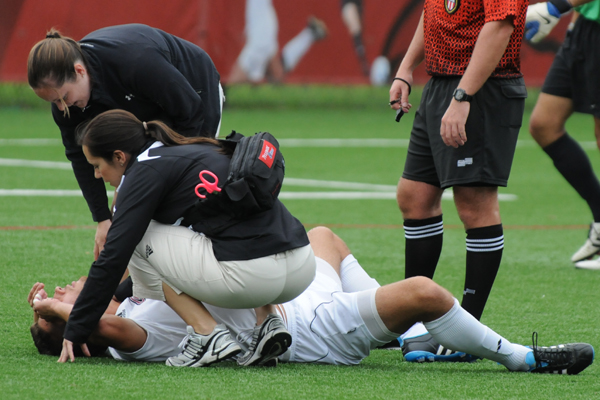Oct 29, 2024Two new studies yield insights into hamstring injury and prevention
Hamstring injuries affect athletes across the globe, accounting for 10% of all injuries in field-based sports. Despite their frequency, the mechanisms behind these injuries and effective prevention strategies remain unclear. Findings from two recent studies offer new insights on hamstring injury prevention.
A recent report from the University of Stanford detailed the two studies on hamstring injuries in athletes. Below is an excerpt from the University of Stanford.
 In the first study, researchers from the University of Queensland and Stanford University, in collaboration with Stanford Athletics, explored the effects of nine weeks of Nordic hamstring exercises – a popular training method aimed at preventing hamstring strains – on the muscle structure of 12 participants.
In the first study, researchers from the University of Queensland and Stanford University, in collaboration with Stanford Athletics, explored the effects of nine weeks of Nordic hamstring exercises – a popular training method aimed at preventing hamstring strains – on the muscle structure of 12 participants.
Utilizing a novel microendoscopy technique developed at Stanford, the team measured the effects of training on human hamstrings at an unprecedented level of detail. The study is published in the Journal of Sport and Health Science.
“The truly unique part of this study was our ability to examine the microscopic adaptations of the muscle in response to Nordic hamstring exercises. No other studies have been able to explore this in humans,” said Scott Delp, the James H. Clark Professor in the School of Engineering at Stanford University and senior author of the study, as well as director of the Wu Tsai Human Performance Alliance at Stanford.
Delp and Mark Schnitzer, a professor of biology and of applied physics in the School of Humanities and Sciences, previously developed a microscope capable of visualizing sarcomeres – the fundamental units within muscle fibers responsible for generating muscle force – in humans.
Using the microendoscope, the researchers observed significant changes in the biceps femoris long head muscle, one of the four muscles that comprise the hamstring, following the nine weeks of Nordic hamstring exercises. Notably, sarcomeres were getting added end-to-end to existing sarcomeres. This growth pattern lengthens the muscle fibers and could decrease the amount of stretch each sarcomere experiences, protecting muscle fibers from overstretching.
Some muscle areas experienced sarcomere increases up to 49%. However, both muscle fiber lengthening and sarcomere increase began to decline after a three-week break from training.
“Our findings, along with previous work from our group, highlight the importance of long-term training to induce meaningful adaptations in the hamstrings,” said Max Andrews, first author and a graduate student at the University of Queensland. “While Nordic hamstring exercises are often used by coaches in short blocks, such as three to four weeks during pre-season, this may not be enough to induce the necessary adaptations we observed. And consistent training is essential to maintain these muscle changes.”
Another strategy for preventing hamstring injuries involves monitoring exposure to high-speed running. While hamstring injuries have been linked to running at high speeds, a second study from Delp’s team, published in Medicine and Science in Sports and Exercise, reveals that speed alone doesn’t tell the whole story.
The researchers found that hamstrings stretch to greater lengths and at faster speeds during acceleration from lower running speeds compared to maintaining a constant top speed. This may explain why hamstring strain injuries often occur during acceleration.
“Running speed alone is insufficient to fully characterize hamstring biomechanics,” said first author Reed Gurchiek, who conducted the study as a postdoctoral fellow with the Wu Tsai Human Performance Alliance at Stanford and is now an assistant professor at Clemson University. “Our data showed that hamstrings are stretched similarly when accelerating from 50% of top speed as when running at a constant 88% of top speed.”
» ALSO SEE: Study reveals effects of resistance training break on muscle and strength
To visualize this, think of your hamstring muscles as a rubber band. When running at a steady pace, the rubber band stretches as the leg moves. However, during sudden acceleration, the rubber band is stretched more intensely and quickly.
The team used the smartphone-based OpenCap system to capture motion data for their experiment outdoors on a natural running surface, providing more realistic movement data compared to previous treadmill-based studies.


